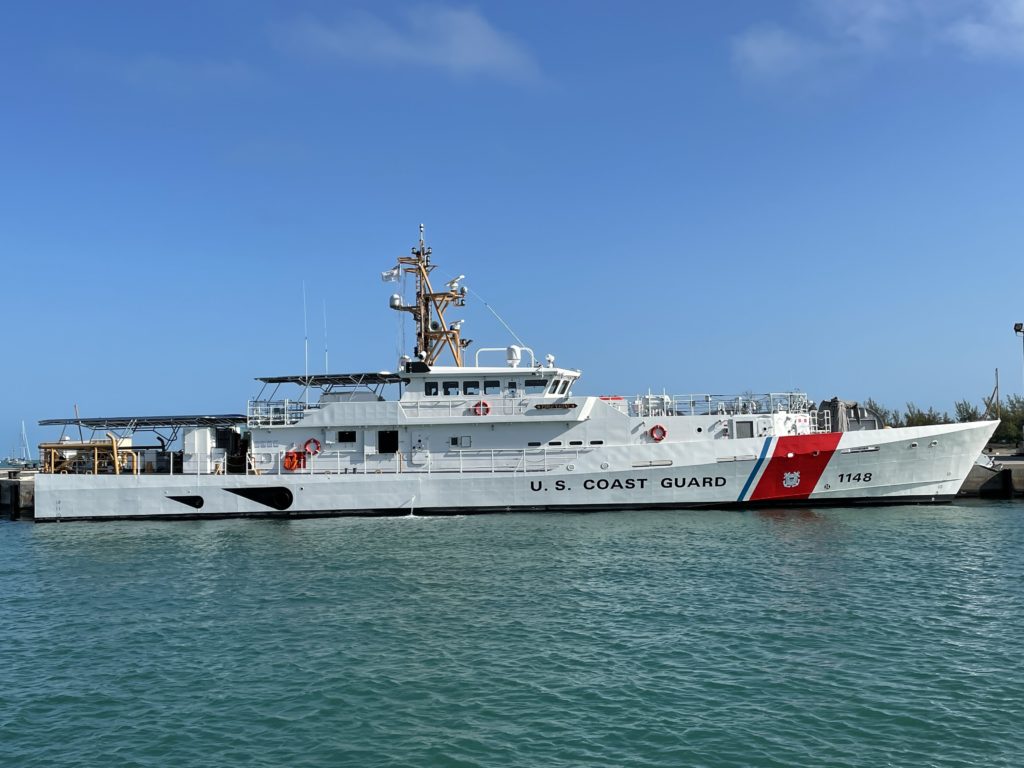Bollinger Shipyards LLC (Bollinger) has delivered the USCGC Pablo Valent to the U.S. Coast Guard in Key West, Florida. This is the 174th vessel Bollinger has delivered to the U.S. Coast Guard over a 35-year period and the 48th Fast Response Cutter (“FRC”) delivered under the current program.

“The early delivery of the USCGC Pablo Valent is another win in Bollinger’s nearly four decade partnership supporting the men and women of the United States Coast Guard,” said Bollinger President & C.E.O. Ben Bordelon. “We are incredibly proud that the FRC platform is a model program for government acquisition and has surpassed all historical quality benchmarks for vessels of this type and complexity. The results are in the detail and the continued early delivery of truly extraordinary Coast Guard cutters that will serve our Nation for decades to come.”
The USCGC Pablo Valent is the first of three FRCs to be home-ported in St. Petersburg, Florida. Sector St. Petersburg has become one of the Coast Guard’s largest commands, with an area of responsibility encompassing over 400 nautical miles of coastline along Florida’s west coast and the third largest U.S. port for domestic trade. The Sector has responsibility for five primary operational missions: Search and Rescue; Marine Safety; Maritime Law Enforcement; Ports, Waterways, and Coastal Security; and Living Marine Resources.
Last month at the commissioning ceremony of the USCGC John Scheuerman, U.S. Coast Guard Commandant Admiral Karl Schultz lauded the “enhanced seakeeping” capabilities of the Bollinger-built FRC platform, saying “these ships are truly technologically sophisticated and ready to stand their duties.”
This week, U.S. President Joe Biden signed the Consolidated Appropriations Act for Fiscal Year 2022, which included $130 million for two additional FRCs, continuing the program beyond its 64 vessel program of record. This is the second time Congress has added FRCs beyond the original 58 vessel program of record.
Each FRC is named for an enlisted Coast Guard hero who distinguished themselves in the line of duty. The Florida Keys Hurricane of September 1919 was one of the worst in Texas history, heavily damaging the Brazos Life-Saving Station and leveling the Coast Guard Station at nearby Aransas.
Seventy-seven ton schooner Cape Horn had been fishing far out in the Gulf as the storm descended on the schooner and its crew of eight, capsizing the vessel and flooding the hold. The men clung to the flooded hulk as the strong hurricane pushed it toward the Texas coast. The Brazos Station lookout spotted the Cape Horn and took immediate action. The crew launched the surfboat in some of the worst sea conditions ever experienced in the area. Although the men were skilled surfmen, the boat shipped seas constantly as waves boarded the vessel from the stern.
Pablo Valent and the rest of the crew held the boat steady and safely landed with all fifteen occupants. For their valiant efforts, Valent and the rest of the Brazos crew received the Silver Life-Saving Medal. Valent went on to have a successful career in the Coast Guard, taking command of the Brazos Station (a.k.a. Port Isabel Coast Guard Station) in 1935, becoming the first Hispanic American in the service to do so. Valent retired after 28 years of service in the Coast Guard.
ABOUT THE FAST RESPONSE CUTTER PLATFORM
The FRC is an operational “game changer,” according to senior Coast Guard officials. FRCs are consistently being deployed in support of the full range of missions within the United States Coast Guard and other branches of our armed services. This is due to its exceptional performance, expanded operational reach and capabilities, and ability to transform and adapt to the mission. FRCs have conducted operations as far as the Marshall Islands—a 4,400 nautical mile trip from their homeport. Measuring in at 154-feet, FRCs have a flank speed of 28 knots, state of the art C4ISR suite (Command, Control, Communications, Computers, Intelligence, Surveillance, and Reconnaissance), and stern launch and recovery ramp for a 26-foot, over-the-horizon interceptor cutter boat.